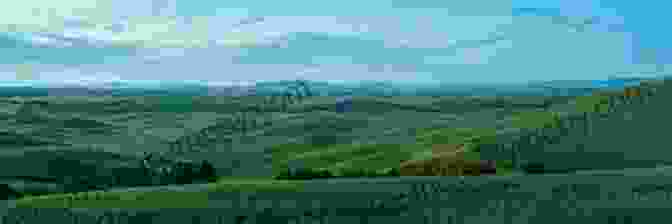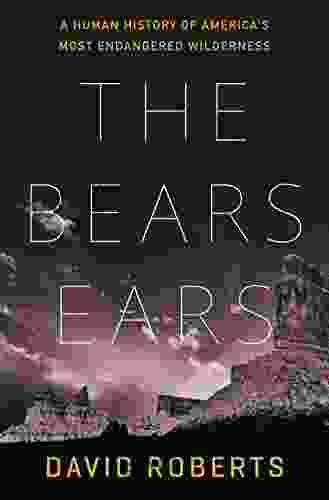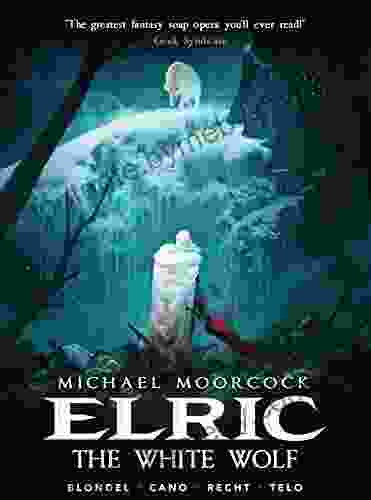Unveiling the Human History of America's Most Endangered Wilderness


4.6 out of 5
| Language | : | English |
| File size | : | 29832 KB |
| Text-to-Speech | : | Enabled |
| Screen Reader | : | Supported |
| Enhanced typesetting | : | Enabled |
| X-Ray | : | Enabled |
| Word Wise | : | Enabled |
| Print length | : | 336 pages |
Prologue: A Tapestry of Time and Place
In the heart of North America lies a wilderness of unparalleled beauty and significance. It is a land of towering mountains, pristine lakes, and ancient forests, a haven for wildlife and a sanctuary for the human spirit. It is also a place where the past and present are inextricably intertwined, where the footprints of indigenous peoples, pioneers, and conservationists have left an enduring mark on the landscape.
This is America's most endangered wilderness, a realm that has been threatened by human activities but has also been preserved and protected by generations of dedicated individuals. In this book, we will explore the rich human history of this extraordinary place, from its earliest inhabitants to its present-day guardians.
Chapter 1: The First Peoples
The first humans to set foot in America's most endangered wilderness were nomadic hunters and gatherers who arrived from Asia thousands of years ago. These indigenous peoples lived in harmony with the land, respecting its rhythms and cycles. They developed a deep understanding of the plants, animals, and natural resources of the region, and they passed down their knowledge through generations.
Over time, the indigenous peoples of America's most endangered wilderness developed a variety of cultures and traditions. They built villages and towns, farmed the land, and hunted and fished. They also developed a rich spiritual life, believing that the land was sacred and that they were its stewards.
Chapter 2: The Arrival of Europeans
The arrival of Europeans in America's most endangered wilderness had a profound impact on the indigenous peoples who lived there. European explorers and settlers brought with them new diseases, new technologies, and new ideas. They also brought a desire to conquer and control the land.
The indigenous peoples of America's most endangered wilderness resisted European encroachment for centuries. They fought wars, signed treaties, and negotiated with the newcomers. But in the end, they were unable to resist the overwhelming power of European technology and culture.
Chapter 3: The Pioneer Era
The 19th century was a time of great change in America's most endangered wilderness. Pioneers from the eastern United States poured into the region, seeking land and opportunity. They cleared forests, built farms, and established towns. They also hunted and fished the region's wildlife to near extinction.
The pioneer era was a time of great hardship and danger. But it was also a time of great hope and opportunity. The pioneers who settled America's most endangered wilderness were a hardy and determined people who helped to shape the future of the region.
Chapter 4: The Conservation Era
The late 19th and early 20th centuries saw a growing awareness of the need to protect America's most endangered wilderness. Conservationists began to lobby for the establishment of national parks and other protected areas. They also worked to educate the public about the importance of preserving the region's natural resources.
Thanks to the efforts of conservationists, a number of national parks and other protected areas were established in America's most endangered wilderness. These areas have helped to preserve the region's natural beauty and wildlife, and they have also provided opportunities for recreation and education.
Chapter 5: The Present Day
Today, America's most endangered wilderness faces a number of challenges. Climate change, pollution, and invasive species are all threatening the region's natural ecosystems. However, there is also a growing movement to protect and restore this extraordinary place.
Conservationists, scientists, and local communities are working together to protect America's most endangered wilderness for future generations. They are planting trees, restoring wetlands, and working to reduce pollution. They are also educating the public about the importance of this region and the need to protect it.
Epilogue: A Legacy for the Future
America's most endangered wilderness is a place of great beauty, significance, and challenge. It is a place where the past and present are intertwined, and where the future is being shaped. The human history
4.6 out of 5
| Language | : | English |
| File size | : | 29832 KB |
| Text-to-Speech | : | Enabled |
| Screen Reader | : | Supported |
| Enhanced typesetting | : | Enabled |
| X-Ray | : | Enabled |
| Word Wise | : | Enabled |
| Print length | : | 336 pages |
Do you want to contribute by writing guest posts on this blog?
Please contact us and send us a resume of previous articles that you have written.
 Book
Book Novel
Novel Page
Page Chapter
Chapter Text
Text Story
Story Genre
Genre Reader
Reader Library
Library Paperback
Paperback E-book
E-book Magazine
Magazine Newspaper
Newspaper Paragraph
Paragraph Sentence
Sentence Bookmark
Bookmark Shelf
Shelf Glossary
Glossary Bibliography
Bibliography Foreword
Foreword Preface
Preface Synopsis
Synopsis Annotation
Annotation Footnote
Footnote Manuscript
Manuscript Scroll
Scroll Codex
Codex Tome
Tome Bestseller
Bestseller Classics
Classics Library card
Library card Narrative
Narrative Biography
Biography Autobiography
Autobiography Memoir
Memoir Reference
Reference Encyclopedia
Encyclopedia William Germano
William Germano Rosie Pope
Rosie Pope David Starkey
David Starkey Davide Deidda
Davide Deidda David Orkin
David Orkin Lindsey Hutchinson
Lindsey Hutchinson Deborah Kogan Ray
Deborah Kogan Ray Jane Bryant Quinn
Jane Bryant Quinn David A Goldstein
David A Goldstein David Carrasco
David Carrasco David B Mcree
David B Mcree Dean Wesley Smith
Dean Wesley Smith Deanna Pak
Deanna Pak David M Friedman
David M Friedman Dayspring
Dayspring David G Mcafee
David G Mcafee David Wallace
David Wallace David A Askay
David A Askay Mark Occhilupo
Mark Occhilupo David Riley
David Riley
Light bulbAdvertise smarter! Our strategic ad space ensures maximum exposure. Reserve your spot today!

 Edison MitchellUnveiling the Cornerstones of Business Acumen: Key Concepts in Accounting and...
Edison MitchellUnveiling the Cornerstones of Business Acumen: Key Concepts in Accounting and... Cade SimmonsFollow ·17.3k
Cade SimmonsFollow ·17.3k Dylan MitchellFollow ·9.7k
Dylan MitchellFollow ·9.7k Jerry WardFollow ·15.4k
Jerry WardFollow ·15.4k Eddie PowellFollow ·13.7k
Eddie PowellFollow ·13.7k Felipe BlairFollow ·5.8k
Felipe BlairFollow ·5.8k Corey GreenFollow ·7.6k
Corey GreenFollow ·7.6k Clinton ReedFollow ·14.9k
Clinton ReedFollow ·14.9k Ian PowellFollow ·3.1k
Ian PowellFollow ·3.1k

 Jayden Cox
Jayden CoxFaith Lies and the War on Terror: Exposing the Truth...
In the aftermath of the 9/11...

 Jack Powell
Jack PowellMad About the Trump Era: Mad Magazine 2024
The Trump...

 Warren Bell
Warren BellYou Got This: Tips for Women Who Want to Rock at Real...
Real estate...

 Ernest Cline
Ernest ClineThe Daring Life and Turbulent Times of the Original Girl...
: Embracing the Spirit of Adventure In...
4.6 out of 5
| Language | : | English |
| File size | : | 29832 KB |
| Text-to-Speech | : | Enabled |
| Screen Reader | : | Supported |
| Enhanced typesetting | : | Enabled |
| X-Ray | : | Enabled |
| Word Wise | : | Enabled |
| Print length | : | 336 pages |














